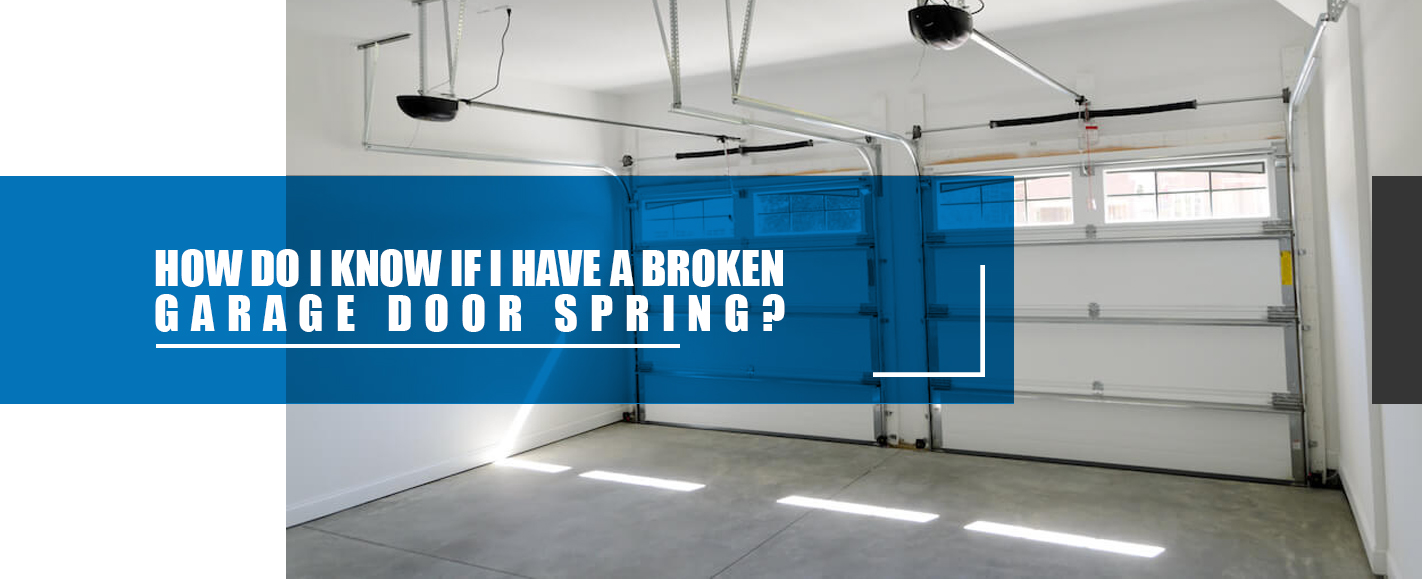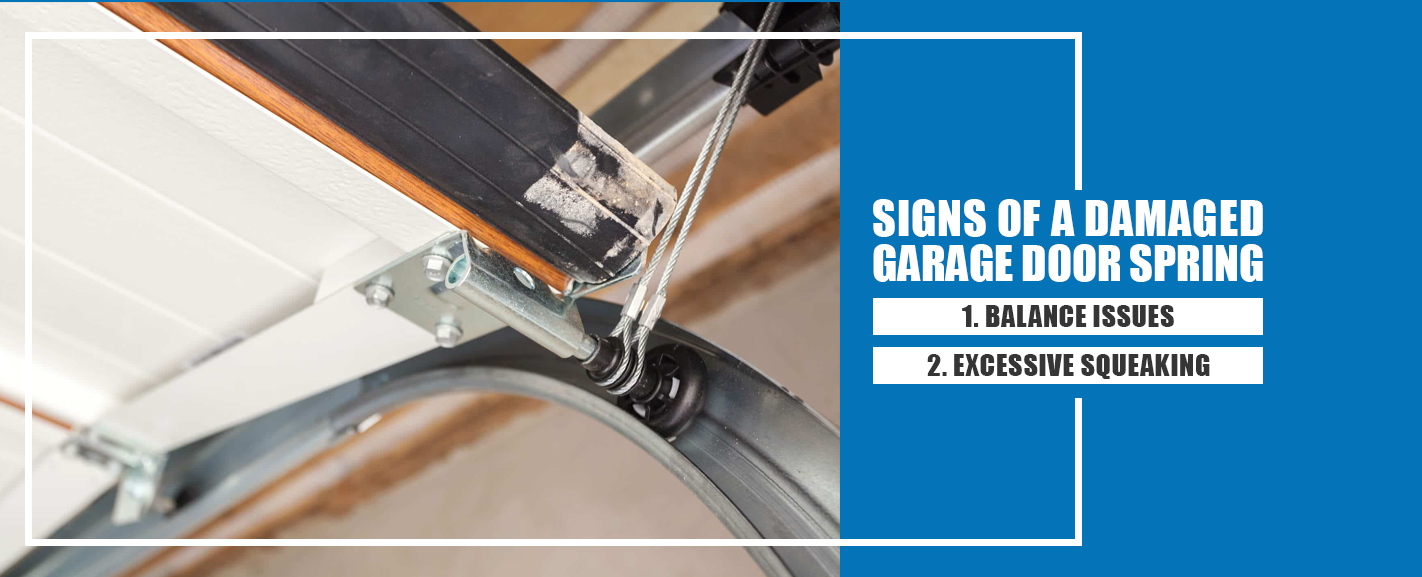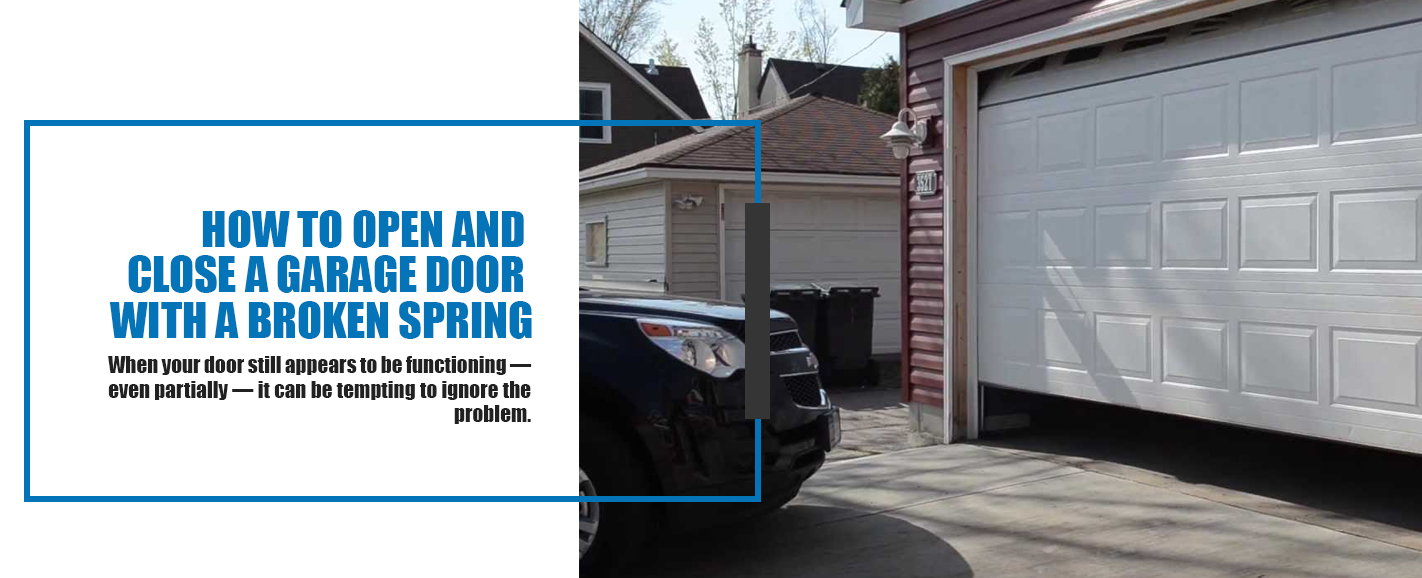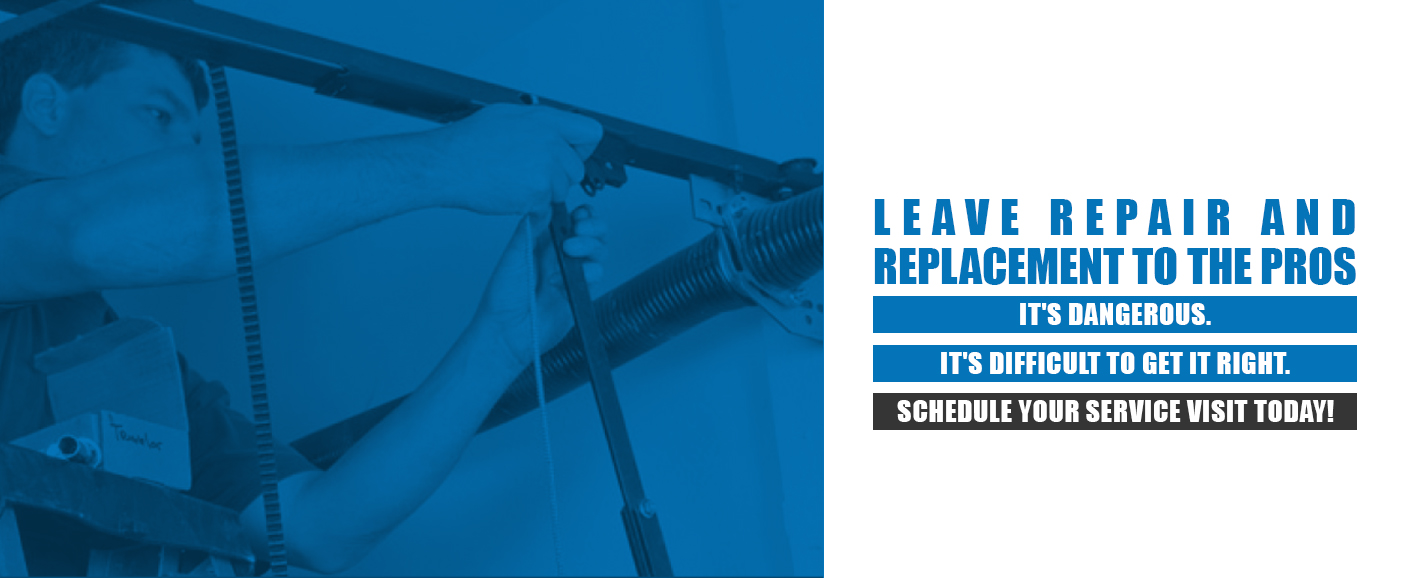How to Tell if a Garage Door Spring Is Broken
For many people, the garage door is used more often than the front door. It’s the main way in and out of the house, and it usually works with just the push of a button.
But one day, you press the button and the garage door not opening becomes a sudden problem. Your car is stuck inside, and now you’re dealing with a garage door issue that needs attention.
There can be many reasons why the door stops working, but one of the most common is a broken garage door spring. The spring helps lift the heavy door, and when it breaks, the motor alone can’t do the job.
Garage Door Spring Repair Services
You don’t need to be an expert in garage door parts, but it helps to know the basics. If you can recognize a problem early, you’ll know when it’s time to call a professional. This initiative saves time, reduces stress, and gets your door working again faster.
Types of Garage Door Springs
Garage doors need springs to lift and lower smoothly. The two main types are the garage door torsion spring and the extension spring.
1. Garage Door Torsion Spring
The garage door torsion spring is mounted above the door. It twists on a metal shaft to lift the door. This type of spring usually lasts 10,000-20,000 cycles, which is about 7-10 years depending on usage.
Torsion springs provide balanced lifting and quieter operation. They are also safer when used with proper cables. The main downside is that they are more expensive and harder to replace. So, professional installation is highly recommended.
2. Extension Spring
Extension springs are located along the sides of the garage door. They stretch to lift the door as it opens. These springs typically last about 10,000 cycles, around 5-7 years.
They are cheaper and easier to replace than torsion springs. However, they can be riskier because if a spring or cable snaps, the door can fall or swing dangerously.
Torsion vs. Extension Springs
Torsion springs offer smoother, quieter, and safer operation. Extension springs are simpler but come with higher safety risks. Choosing between them depends on the door’s weight, usage frequency, and safety considerations.
You should always have a professional to handle spring installation or replacement. It is because both types store a lot of energy and can cause serious injury if mishandled.
Common Signs of Broken Garage Door Springs
Your garage door is heavy, and the springs are what make it possible for the opener or your hands to lift it. If you know the signs early, they can help you avoid bigger problems and keep your family safe.
Below are the most common signs that show your garage door spring may be damaged or broken.
1. Balance Problems with the Door
If your door feels hard to open or close, jerks when opening, or suddenly falls after lifting a few inches. They could be signs that the spring may not be doing its job. It is called a balance issue.
You can also notice the problem when:
- The door moves more slowly than usual.
- It falls quickly once it starts moving.
- It makes loud and uneven noises while going up and down.
Balance problems don’t always mean a spring is broken, but they put extra strain on the system. If not fixed, they can make a broken spring garage door a bigger risk.
2. Loud and Unusual Noises
It’s normal for any garage door to make some sound. But if your garage door making noise has become louder or squeakier than before, the springs may be worn out.
Sometimes you can fix small squeaks if you lubricate your garage door with a proper spray. But if the loud noises keep coming back, it’s likely a deeper issue with the springs or other parts of the system.
3. A Sudden Loud Bang
When a torsion spring actually snaps, you will know it right away. It makes a very loud bang – some people describe it as sounding like a gunshot. It happens because of the heavy tension inside the spring.
If you hear this noise, you should check the spring above the garage door. Many times, you will clearly see a gap or break in the coil. This condition is a sure sign you’re dealing with a broken spring garage door.
4. The Door Won’t Stay Open
Another warning sign is when the door won’t stay in the up position. You may open the garage door all the way, but it slowly slides back down or slams shut.
It happens because the spring can no longer hold the door’s weight. Without proper spring support, the opener alone isn’t enough to keep it steady.
5. Door Looks Crooked or Misaligned
Take a look at the door when it moves. Does one side rise faster than the other? Does your garage door look off-track or tilted? This condition can mean that one of the springs has failed, and the other is trying to do all the work.
You may also notice these signs:
- The top section of the door looks bent.<
- Cables near the springs are hanging loose.
- The door jams partway through the track.
Any of these issues can show that the spring is no longer working as it should.
6. The Door Feels Too Heavy
If you pull the emergency release cord and try to open the door by hand, it should lift fairly smoothly. But when the spring is broken, the door feels extremely heavy.
This type of heaviness is one of the clearest signs that the spring isn’t helping to support the weight. Trying to force it open in this condition is dangerous and can cause more damage.
7. Small Gaps or Stretching in the Spring
Sometimes the damage is easy to see. You should look closely at the spring itself. If there’s a visible gap in the coil or if the spring looks stretched out, then the spring is broken or close to failing.
Other signs connected to this problem include:
- The door only opens a few inches, then stops.
- The safety system blocks the opener because of uneven weight.
- The door rises much more slowly than it used to.
When you see these signs, it’s time to call a professional repair service right away.
Springs are under a lot of tension, and fixing them without training is dangerous. While some small noises can improve when you lubricate your garage door, anything more serious should be left to experts, like RCS Garage Doors if you live in Lebanon Rd, Mint Hill, North Carolina.
By spotting these warning signs early, you can protect your home, save time, and get your garage door working smoothly again.
Adjusting a Garage Door Spring
Can You Open a Garage Door With a Broken Spring?
Yes, you can open a Garage door with a broken spring. However, you have to open it manually. Usually, the opener has to work harder, and in time, you may need to replace your garage door and opener, which costs much more than just fixing the spring.
If the door is already open, be very careful. The door feels heavy because the spring isn’t helping to hold the weight anymore. Never pull the manual release unless you have strong helpers to guide it down.
Otherwise, it can slam shut and cause damage or injury. For safety, you should block the track with sturdy objects to catch it if it slips, and also you should make sure everyone in the house stays away from the door.
When the door is closed, keep it that way until a professional arrives. If you must open it to get your car out, you’ll notice jerky or uneven movement or even misaligned door panels.
They are clear danger signs. Without the spring, even the safety cable cannot handle the full load safely. The safest choice is always to leave the door alone and call a trained repair service.
Broken Garage Door Spring Repair Cost
Repairing a broken garage door spring typically costs less than replacing the whole door. Prices can vary depending on the spring type and labor, but it’s always cheaper than waiting until the damage forces you to replace your garage door and opener.
When to Call a Professional for Spring Repair
If you searched online, you’d likely come across several websites claiming they can instruct you in how to repair or replace your garage door spring. And, if you’re like most homeowners, it can be tempting to save a few dollars and turn this into a DIY project.
But, with the statistics out there about garage door-related injuries, it’s just not worth the risk to you or your family. Why? Check out the following section to learn more.
1. It’s dangerous.
Your garage door is heavy. When the spring isn’t working, it can’t take the weight of the door. If the door comes crashing down, it can hurt someone in its path.
2. It’s difficult to get it right.
Because a broken or malfunctioning spring is a safety hazard, there’s no room for error. If you don’t install it right, someone could get hurt, or you could end up damaging your garage door.
Saving money is never worth the risk of hurting yourself or someone you love. If you suspect you have a damaged or broken garage spring, it’s time to call the experts.
3. Special tools are needed.
Garage door springs are under high tension. Only professional tools and experience can handle them safely. Trying it with regular tools can lead to accidents or damage.
4. You could void warranties.
Some garage doors come with warranties that become void if you try DIY repairs. Using a professional keeps the warranty valid and ensures proper repair.
5. Hidden problems may be missed.
Experts can spot other issues, like worn cables or misaligned panels, while replacing the spring. DIY attempts may overlook these, thus they can result in bigger problems later.
Providing quality service and repair in the Charlotte, N.C. area, RCS Carolinas is home to a team of experienced, well-trained professionals who are ready and able to diagnose problems with garage doors of all kinds.
While we are confident we can repair your garage door and have it working like new, if you decide it’s time to replace your existing one, RCS Garage Doors in Thompson Rd, Mint Hill, North Carolina, can help with that, too.
Request Garage Door Service Today
Offering a variety of Clopay garage doors, our showroom has many great options if you’re in the market for a high-quality garage door. Let us get your garage door working again. Give RCS a call and schedule a service today!
FAQs
What Happens if a Torsion Spring Breaks?+
When a torsion spring breaks, the garage door may jerk or move unevenly, feel extremely heavy, or fail to stay open. The opener struggles to lift the door, and continuing to use it can damage the door, cables, and opener.
Broken Garage Door Spring Repair Cost?+
Repairing a broken garage door spring typically costs less than replacing the whole door. Prices can vary depending on the spring type and labor, but it’s always cheaper than waiting until the damage forces you to replace your garage door and opener.
What Does a Broken Garage Door Spring Look Like?+
A broken garage door spring often shows a visible gap in the coil or stretched sections. The door may sag, panels can appear misaligned, and safety cables may hang loose. These are signals that the spring is no longer supporting the door properly.
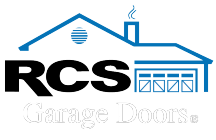
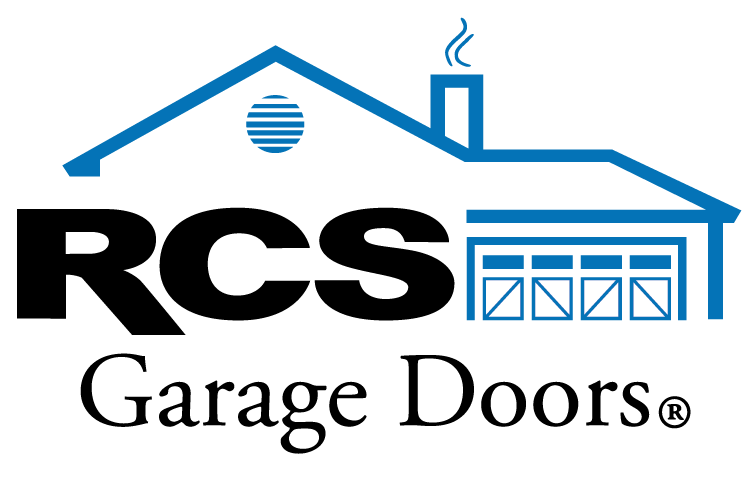
 Register My Door
Register My Door
